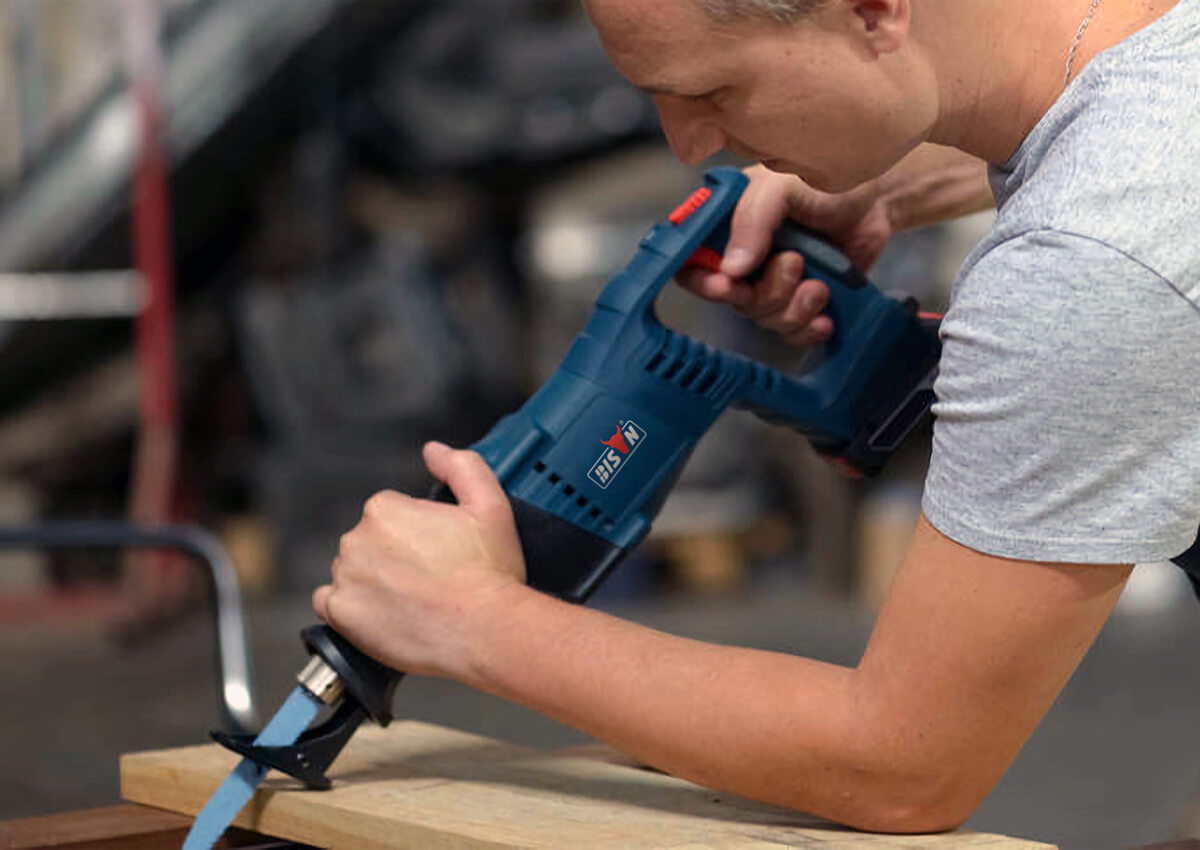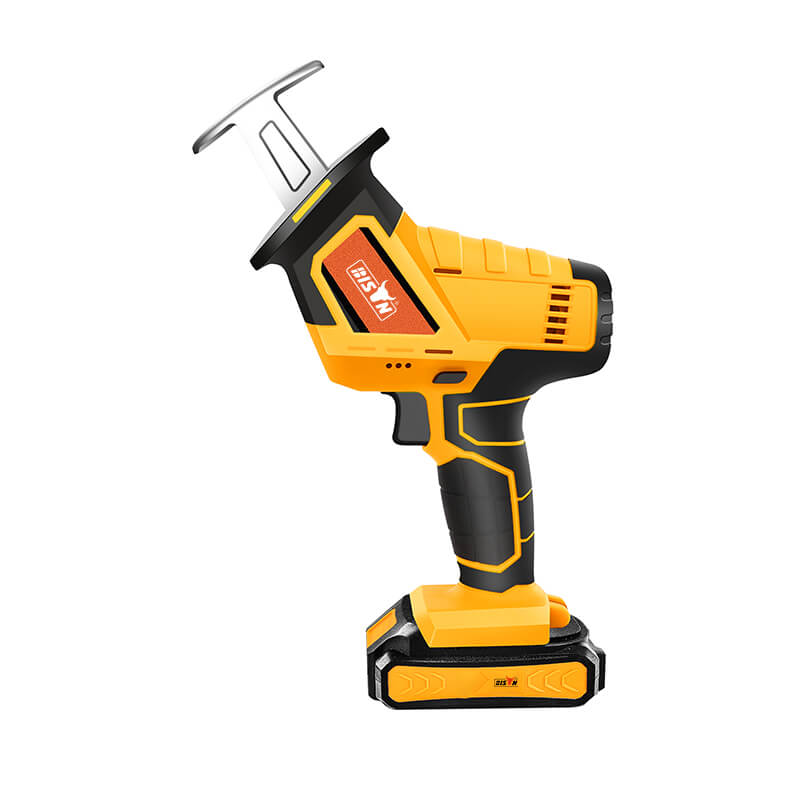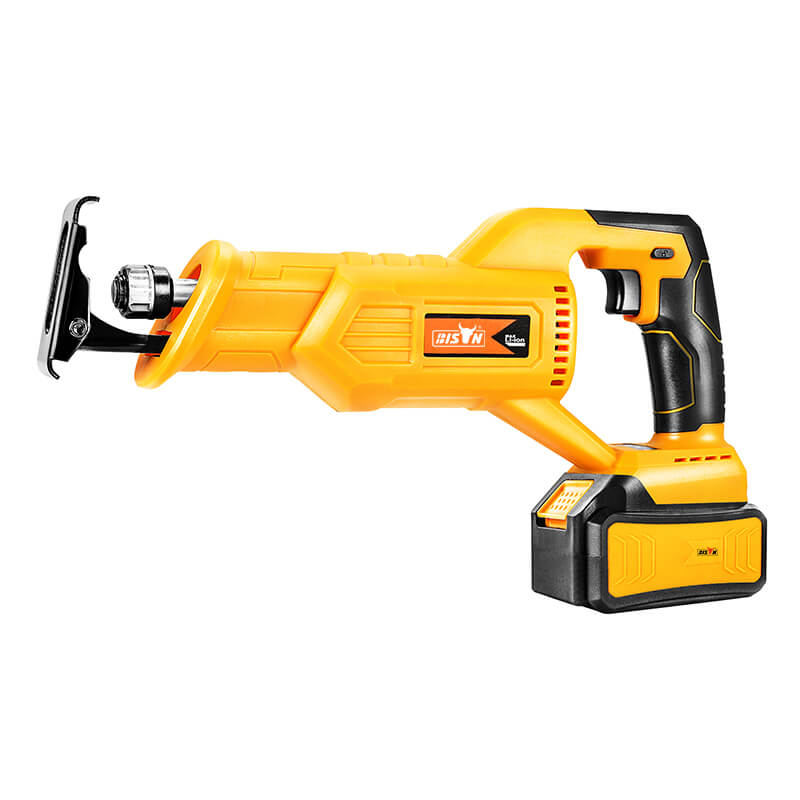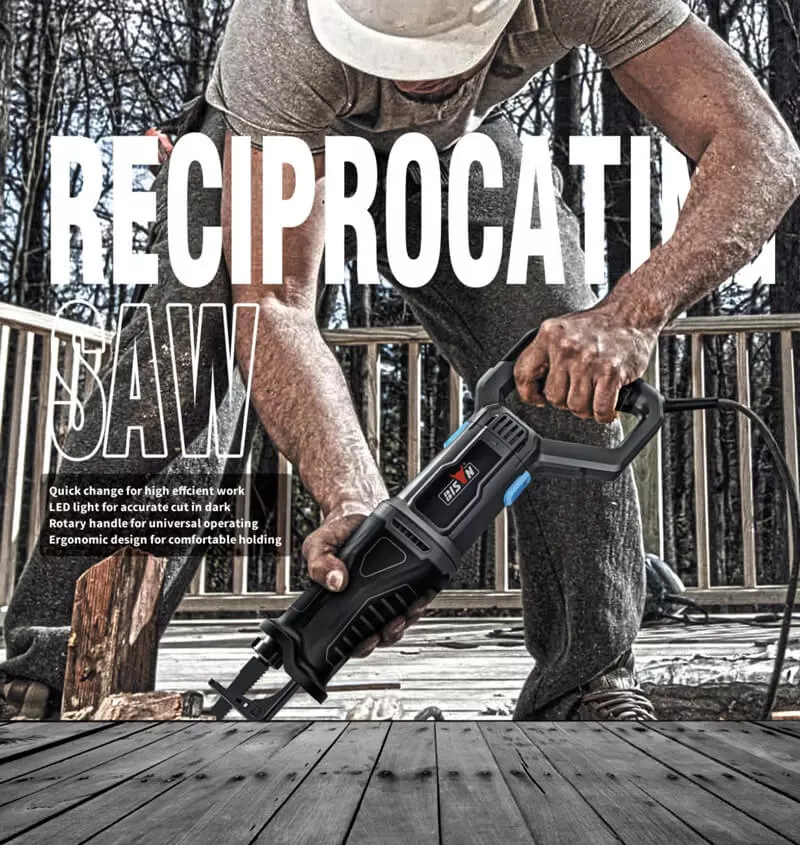Construction workers rely on reciprocating saws to trim pipes and make quick work of demolition tasks. DIY enthusiasts use them for home improvements, furniture repairs, and even craft projects. Landscape designers find it useful for trimming thick branches and pruning overgrown shrubs. This inherent versatility drives continued strong demand for reciprocating saws around the world.
Whether you serve contractors, DIY enthusiasts, or landscapers, choosing the ideal BISON reciprocating saw can significantly improve your projects. With so many options on the market, it's crucial to know what features to look for and how to make the right choice for your needs. Welcome to the reciprocating saw buying guide brought to you by BISON!
Learn about reciprocating saws
What is a reciprocating saw?
In short, it is a handheld power tool that uses a push-pull ("reciprocating") blade motion to cut a variety of materials, such as drywall, fiberglass, metal, plastic, and wood.
While "reciprocating saw" is the official term, you may also hear it called by other names, including:
Saber saw: This nickname aptly describes the tool's long, curved blade, which is reminiscent of a saber.
Sawzall: This is actually a popular brand name for reciprocating saws made by Milwaukee Tool, and "Sawzall" is often used loosely to refer to any reciprocating saw.
reciprocating saw mechanics
The magic of a reciprocating saw lies in its simple yet effective mechanism, at the heart of which is a motor that drives a straight or slightly curved blade back and forth in a high-speed reciprocating motion. The user holds the saw and moves the blade to the desired cutting path, applying pressure as needed to cut.
How does the motor achieve this transformation? Through something called a crank mechanism. First the motor spins a circular component called a crankshaft. Attached to the crankshaft is a connecting rod, which is then connected to the saw's blade clamp. As the crankshaft turns, the connecting rod is forced to move in a straight line, pulling and pushing the blade clamp. This back-and-forth action allows for powerful cuts, making it ideal for demolition, pruning, cutting pipes, and trimming branches.
Construction of reciprocating saws
Beyond the simple mechanism lies a well-thought-out design, with each component playing a vital role:
Blade
Reciprocating saw blades come in a variety of shapes, sizes, and tooth configurations, each tailored for different materials and cuts. When cutting wood, use large, coarse teeth. When cutting metal, choose small, fine teeth or special teeth designed for metal.
Many of BISON's models feature quick and easy blade-changing mechanisms, making it easy to replace dull blades or switch between different types of blades, saving you time and energy.
Shoe
Located at the base of the saw, the shoe provides a stable platform for guiding the blade and maintaining precise cuts. Some shoes offer adjustable angles or swivel options.
Handle
The handle is designed for comfort during extended use, often with shock-absorbing materials and contoured grips to reduce fatigue. Many of the more powerful reciprocating saws also come with an auxiliary handle for increased control and stability during operation.
Trigger
Typically, the trigger itself controls the speed of the blade. Pressing it lightly initiates a slower cut, while pressing it fully unleashes the saw's full power. For extended use, some triggers offer a lock-on option, reducing hand fatigue caused by continuous pressing.
Additional features
Blade guard: The blade guard is an important safety component that prevents the user from accidentally contacting the moving blade.
Safety switch: Many saws come with a safety switch that must be activated before the trigger is pressed to prevent accidental activation.
Anti-vibration technology: Look for features that reduce vibration to enhance comfort during extended use.
LED work light: Illuminates the cutting area for increased visibility, especially in low-light conditions.
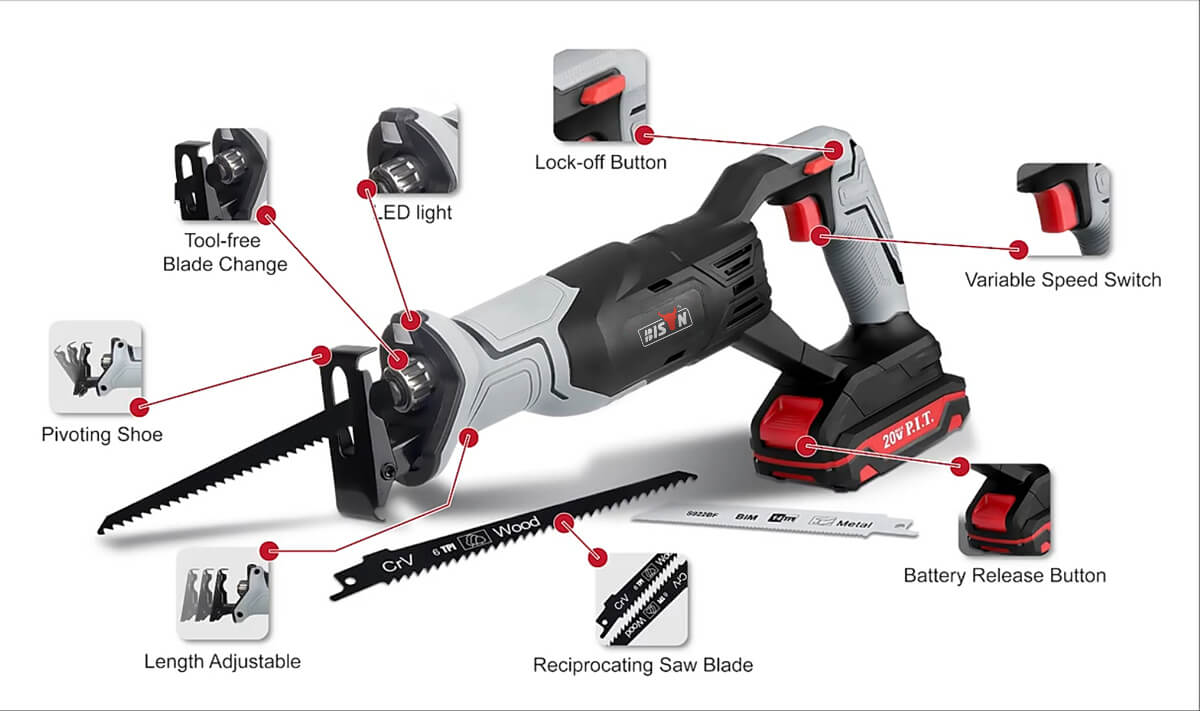
Choosing the right reciprocating saw for your business
Be sure to choose the best saw for your needs and preferences to ensure optimal project efficiency and performance.
Types of reciprocating saws
Each type of reciprocating saw is suitable for different applications and user preferences. Understanding the differences between these models can help you choose the reciprocating saw that best suit your needs and projects.
Corded reciprocating saws: Corded reciprocating saws run on electricity. They are more powerful than cordless reciprocating saws and are ideal for heavy-duty tasks and continuous use, but they require access to an electrical outlet.
Cordless reciprocating saws: These saws are powered by rechargeable batteries, which allow for greater portability and flexibility. They are ideal for outdoor work or places where there is no readily available power source. However, their power and runtime may be slightly lower than corded models. For optimal use, consider battery runtime and charging time, and you can also customize the number of batteries at BISON.
Compact reciprocating saws: Also called mini reciprocating saws, these models are small and lightweight and designed for precise cutting in tight spaces or at height, such as plumbing, electrical work, and HVAC installation, and may not be suitable for heavy-duty tasks
Orbital reciprocating saws: These saws have an orbital action mechanism that adds circular motion to the standard back-and-forth motion of the saw blade. This allows for more powerful cuts and faster material removal, making them ideal for demolition and rough-cutting jobs, which are not suitable for precision tasks. Some reciprocating saws have adjustable orbital settings, allowing you to customize the cutting action to the material and job.
Power and speed
Higher power ratings indicate greater cutting power and efficiency, especially with tougher materials. Corded models are rated in amps, look for 10-amp models for powerful cutting. Cordless models are rated in volts, and 18-20V batteries offer a good balance between performance and run time.
Variable speed controls provide flexibility and accuracy by letting you change the cutting speed to correspond with the material being cut. Look for models with movable speed settings to prevent damage and ensure clean cuts.
Stroke length
Measured in inches, stroke length refers to the distance the blade moves back and forth. Longer stroke lengths allow for faster cuts and greater efficiency, especially with thicker materials. Shorter stroke lengths provide greater control for precise cuts. Consider the range of stroke lengths available and choose the one that best suits your intended application.
Meet your needs and budget
Remember that choosing the right reciprocating saw is all about finding the perfect balance of features that fit your specific needs and budget.
For basic DIY projects, a corded or cordless model with basic features and moderate power will suffice. For frequent or heavy-duty use like a pro, purchase a higher-amp corded saw or a cordless model with high voltage and ample battery capacity. Consider the saw's durability and reliability and advanced features to withstand the rigors of continuous user operation.
Your budget should be determined based on your needs, preferences, and the features you need in your reciprocating saw. While it may be tempting to go for the cheapest option, remember that buying a high-quality tool with more features and better performance will ultimately save you money while getting better results.
BISON: Offering a range of high-quality reciprocating saws
BISON manufactures durable, reliable, high-performance power saws, including reciprocating saws. Our selection of reciprocating saws combines strength, accuracy, and durability to meet the needs of DIY enthusiasts and professionals. To enhance comfort and performance, BISON is designed with advanced features such as powerful motors, variable speed control, tool-free blade changing mechanism and ergonomic design. In addition, BISON reciprocating saws are competitively priced while offering comparable or superior features.
Contact us today to learn about the BISON reciprocating saw difference!
